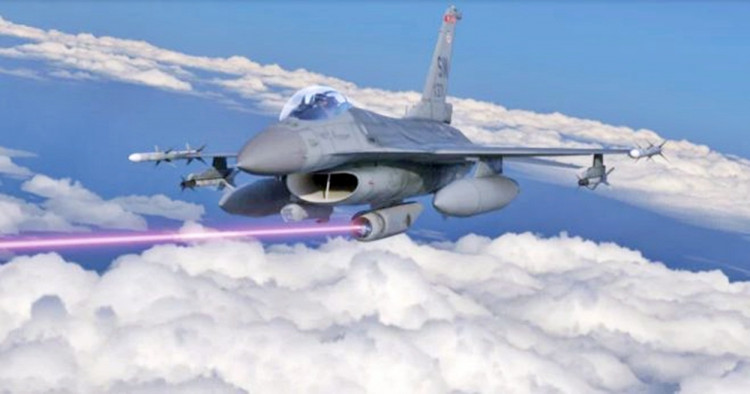The U.S. Air Force will use the first of its airborne lasers now under development to defend its fighter jets against air-to-air missiles and not to destroy enemy aircraft.
Developing defensive "tactical airborne laser pods" are a necessary first step in deploying future Laser Weapon Systems capable of shooting down other aircraft. Leading the development of defensive lasers is Lockheed Martin, which has been involved in laser weapon development and relevant technologies for the past 40 years.
Lockheed Martin is a key member of the industry team involved in the "Self-Protect High Energy Laser Demonstrator (SHiELD)" program under the Air Force Research Laboratory (AFRL). Its main role is to build critical components of an airborne laser pod. These bits include the high-energy laser (HEL) and other subsystems demonstrated recently.
AFRL's SHiELD program, which is sponsored by Air Combat Command, originally aimed to demonstrate a HEL on a tactical aircraft in 2021. This timetable, however, has been reset for 2023.
"This is a really complex technology to try to integrate into that flight environment, and that's ultimately what we're trying to do with this program, is demonstrate that laser technology is mature enough to be able to integrate onto that airborne platform," said Jeff Heggemeier, SHiELD program manager for AFRL. "But even things like COVID, and COVID shutting down the economy. That has impacts.
The SHiELD program aims to put defensive laser pods on Air Force fighters to deflect fast approaching air-to-air missiles. The SHiELD pod will go on nonstealthy, fourth-generation aircraft like the General Dynamics F-16 Fighting Falcon single-engine supersonic multirole fighter. The tactical airborne laser pods can't be used on stealth fighters such as the Lockheed Martin F-35 Joint Strike fighter because its shape will compromise the jet's stealth capability.
SHiELD, which will be housed in a large pod, will divert missiles away from U.S. warplanes. Future improvements intend to increase the laser's power output enough for it to destroy incoming missiles.
For the Air Force, Lockheed Martin is focusing on building a beam director consisting of a gimballed beam director assembly and an acquisition and tracking system. The beam director keeps a laser focused on its target long enough to destroy it despite the latter's efforts to weave and escape.
"Lockheed Martin is working to fly a laser on tactical fighters within the next five years," said Mark Stephen, a Lockheed Martin laser expert. "We're spending a lot of time getting the beam director right."
AFRL is working on experimental demonstrator weapons inside a pod that can be bolted onto a warplane like the Boeing B-52H Stratofortress.






